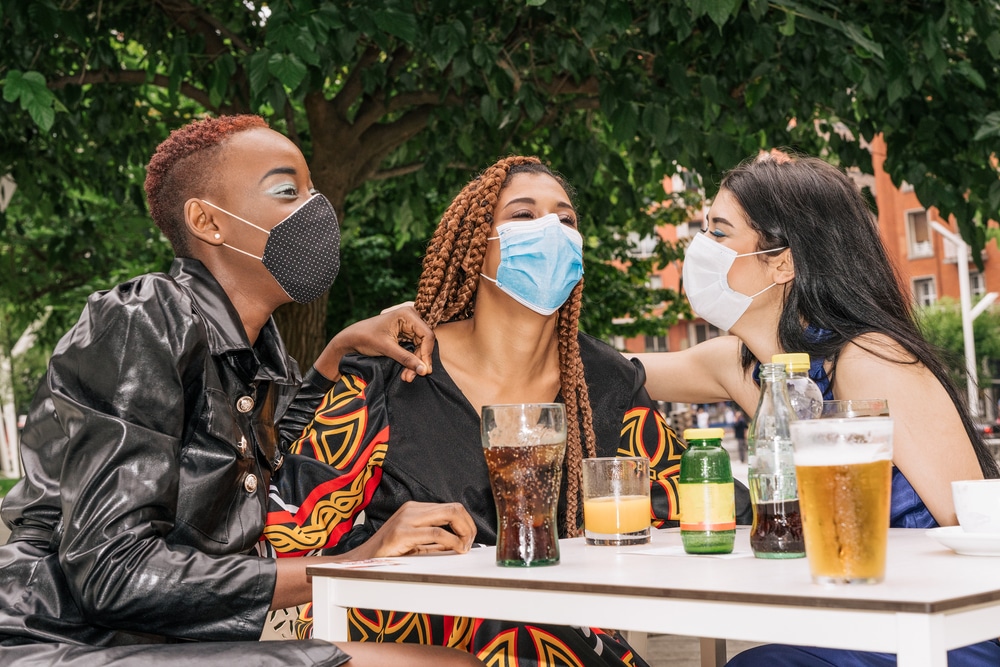
Alcohol is legal and readily available in restaurants, grocery stores, sports games, and clubs. It is also widely advertised. Anyone 21 years or older can walk into a bar and grab wine, liquor, or beer in America. As long as they don’t drink in public places like vehicles, sidewalks, and parks, they’re good to go. Alcohol does not carry the same stigma as other drugs. So why is alcohol a socially more acceptable addiction in our society?
Many people consider alcohol a necessary element for relaxing or having a good time. They drink to celebrate, commiserate or wind up after a long day at work. In fact, society itself encourages alcohol as a way of life with phrases like “one for the road” or “relax with a glass of wine.” Some churches even drink wine during religious customs like Eucharist.
Drinking is socially acceptable. Sadly, the prevalence has seen many people desensitized to the harmful effects of alcoholic beverages. People have and will continue to normalize drinking alcohol in a way that would never be tolerated with other drugs.

Alcohol is a central nervous system depressant that creates euphoria and relaxation. It does not carry the stigma of other drugs like cocaine or marijuana, yet a 2010 study shows that it is the world’s most dangerous drug when considering the harm it does to drinkers, along with their loved ones. To this end, it is more harmful than crack cocaine and heroin.
There has been lots of media commentary on the binge drinking culture of young Americans and the need to sensitize people on the dangers of alcohol. But different theories and models about health beliefs, drinking cultures, and behavioral change suggest that this alone might not work. The increasing liberalization of alcohol normalizes drinking, and use becomes engrained in the daily fabric of life.
Despite the dangers mentioned above, people are still more accepting of alcohol and alcohol addiction for these reasons:
One of the biggest reasons alcohol is socially more acceptable than other drugs is legalization. The legal aspect makes alcohol more accessible than other drugs. It also gives people the impression that it's safe. And with the availability and normalization, young adults are more inclined to try alcohol.
The National Institute on Drug Abuse reveals that 70% of high school students will have tried alcohol by the time they’re seniors. And this is primarily due to easy access – at home and in the marketplace.
Alcohol has always been there and has been part of people’s traditions, culture, and history. Since time immemorial, it has been used in parties, celebrations, agreements, etc. So, society is sort of wired to believe that alcohol should be a part of such occasions.
In addition to having history on its side, alcohol is seen as an excellent taste for pairing foods, like pizza and beer or wine and cheese. In fact, in countries like France and Italy, wine is an integral part of religious ceremonies and mealtimes.
In other parts of the world, alcohol serves as a statement of affiliation, a label defining the nature of social events or situations, or an indicator of social status. People don’t consider alcohol dangerous because they feel they can control the amount they take. Some even assume that alcohol only harms serious drinkers or those who drink the cheap stuff. But this is not true.
Some people believe that alcohol is safe and not as harmful as other drugs like cocaine, meth, or heroin. While this might be true, alcohol is known to cause serious side effects like impaired judgment, insomnia, mental health issues, etc. Not only that. It also causes addiction, with statistics revealing that about 300 million people worldwide have alcohol use disorder (AUD).
Alcohol is responsible for 1 in every 20 (or 5.3%) deaths globally.

Alcoholic beverages are widely advertised on all media. From magazines to billboards and televisions to online, it’s hard to miss an alcohol commercial on any given day. The constant advertising embeds alcohol in our minds, making it seem like a normal part of our lives. Add that to endless drinking songs that play on the radio, and you begin to understand why alcohol is the most widely abused substance in the US.
Sadly, the exposure and availability lead young adults to experiment with alcohol. The National Institute on Alcohol Abuse and Alcoholism reveals that about 5,000 people under the age of 21 years die because of underage drinking every year. This includes approximately:
Like many people, you probably assume that an occasional glass of wine or beer at mealtimes or special occasions is harmless. But drinking any amount of alcohol can cause unwanted health issues. Here are some short- and long-term health problems associated with alcohol.
Temporary effects may include:
At a personal level, heavy drinking can lead to the development of long-term health conditions like:

Alcohol use is also known to cause a range of health care concerns like:
Here are some factors that may increase your chances of experiencing AUD:
If you or someone close to you is struggling with alcohol or drug abuse, it’s best to seek treatment. Untreated addiction can stop your life in its tracks. AUD is a progressive disease whose effects and severity worsen over time without treatment.
The good news is that there are different treatment programs and therapy sessions designed to help you stop drinking and lead a sober life. Don’t let substance abuse cripple your life. Get the help you need today.